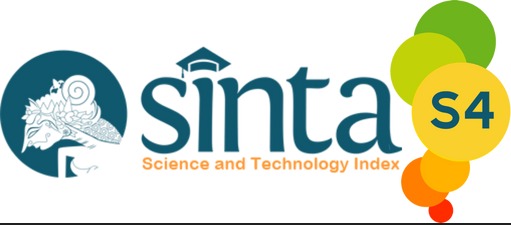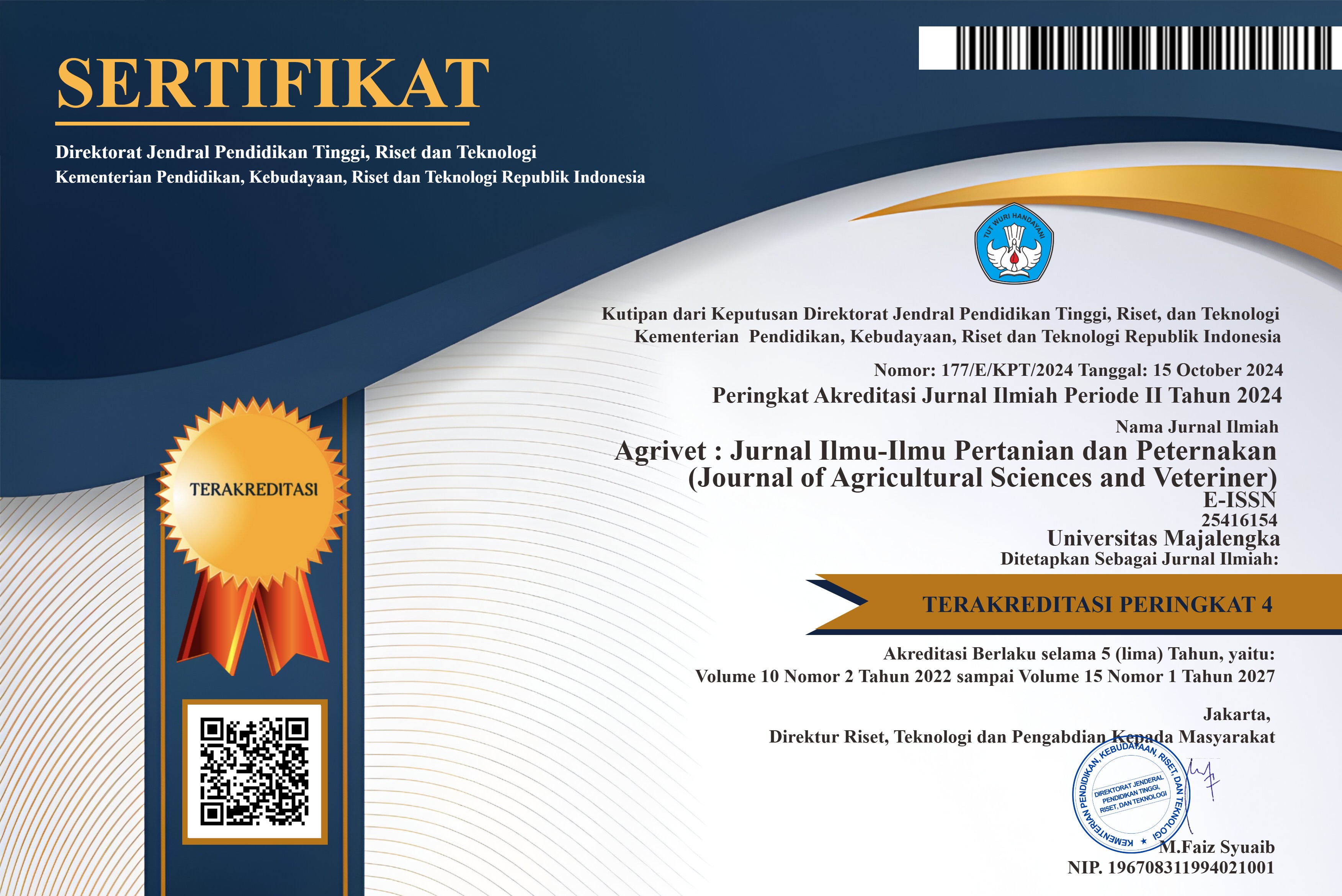Digestibility of dry matter and organic matter of complete rations based on banana stems in Ciayumajakuning muscovy duck
DOI:
https://doi.org/10.31949/agrivet.v11i2.7141Abstract
This study aims to obtain the digestibility of dry matter and organic matter of banana stem-based muscovy duck rations. The study was conducted experimentally using a completely randomized design (CRD) with 5 treatments and 4 replications on twenty drakes. The five treatments are P0 (ration + 0% banana stem as control), P1 (ration + 25% banana stem), P2 (ration + 50% banana stem), P3 (ration + 75% banana stem), and P4 (ration + 85% banana stem). %). Observation data were analyzed using one-way ANOVA, followed by Duncan's Multiple Range Test (DMRT) to determine differences between treatments. The results of the study showed that the Muscovy diet with the addition of 50% banana stems had the best organic matter digestibility and dry matter digestibility, namely 49.28 ± 0.23% and 54.55 ± 0.41%. It could be concluded that the Muscovy ration with the addition of 50% banana stems had the best quality.
Keywords:
Dry matter, Organic matter, Quality of entog rationDownloads
References
Bati, J., Biza-Koukaba, C., Banga-Mboko, H., Mfoukou-Ntsakala, A., Bakoutana, D., Adzona, P., Hornick, J., & Leroy, P. (2014). Phenotypic Characterization According to The Feather Color of Indigenous Muscovy Ducks Bred in The Back Yard in Brazzaville, The Congo. ANIMAL PRODUCTION. https://doi.org/10.20884/1.anprod.2014.16.3.459
Cheng, Y. S., Rouvier, R., Hu, Y. H., Tai, J. J. L., & Tai, C. (2003). Breeding and genetics of waterfowl. World’s Poultry Science Journal. https://doi.org/10.1079/WPS20030032
Drouilhet, L., Monteville, R., Molette, C., Lague, M., Cornuez, A., Canario, L., Ricard, E., & Gilbert, H. (2016). Impact of selection for residual feed intake on production traits and behavior of mule ducks. Poultry Science. https://doi.org/10.3382/ps/pew185
Marie-Etancelin, C., Chapuis, H., Brun, J. M., Larzul, C., Mialon-Richard, M. M., & Rouvier, R. (2008). Genetics and selection of mule ducks in France: A review. In World’s Poultry Science Journal. https://doi.org/10.1017/S0043933907001791
Oguntunji, A. O., Oladejo, O. A., & Ayorinde, K. L. (2015). Seasonal variation in egg production and mortality of Muscovy ducks (Cairina Moschata). Biotechnology in Animal Husbandry. https://doi.org/10.2298/bah1502181o
Rochlitz, I., & Broom, D. M. (2017). The welfare of ducks during foie gras production. Animal Welfare. https://doi.org/10.7120/09627286.26.2.135
Tamsil, H. (2018). Genetic Resource of Muscovy Duck (Cairina moschata): Profile and Potential Production as Meat Producer. Indonesian Bulletin of Animal and Veterinary Sciences. https://doi.org/10.14334/wartazoa.v28i3.1839
Widianingrum, D., Widjastuti, T., Anang, A., & Setiawan, I. (2020). Technical characteristics of Muscovy duck (Cairina Moschata) in Ciayumajakuning, West Java Indonesia. Journal of Agricultural Sciences - Sri Lanka. https://doi.org/10.4038/jas.v15i2.8814
Published
How to Cite
Issue
Section
License
Copyright (c) 2023 Dini widianingrum, Iwan Setiawan, Oki Imanudin, Rachmat Somanjaya

This work is licensed under a Creative Commons Attribution-ShareAlike 4.0 International License.
An author who publishes in the Jurnal Agrivet agrees to the following terms:
- Author retains the copyright and grants the journal the right of first publication of the work simultaneously licensed under the Creative Commons Attribution-ShareAlike 4.0 License that allows others to share the work with an acknowledgment of the work's authorship and initial publication in this journal
- The author is able to enter into separate, additional contractual arrangements for the non-exclusive distribution of the journal's published version of the work (e.g., post it to an institutional repository or publish it in a book) with the acknowledgment of its initial publication in this journal.
- The author is permitted and encouraged to post his/her work online (e.g., in institutional repositories or on their website) prior to and during the submission process, as it can lead to productive exchanges, as well as earlier and greater citation of the published work









